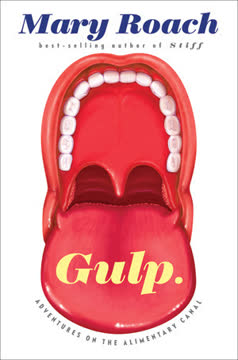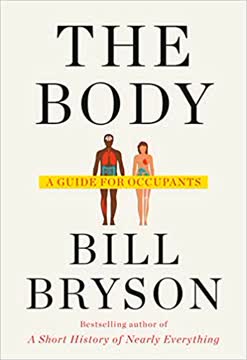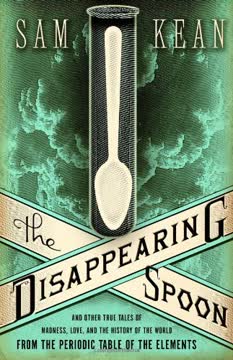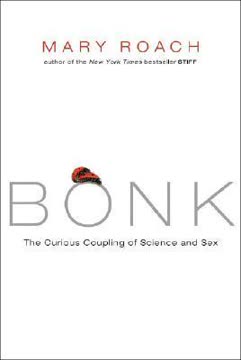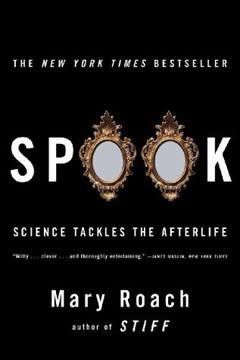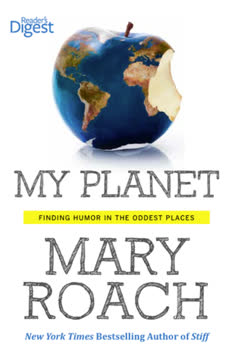Key Takeaways
1. Flavor is Mostly Smell, Not Taste
Eighty to ninety percent of the sensory experience of eating is olfaction.
Beyond the tongue. While our tongues detect five basic tastes—sweet, bitter, salty, sour, and umami—the vast majority of what we perceive as "flavor" comes from our sense of smell. This "retronasal olfaction" occurs as aromatic gases from food waft up through internal nostrils to olfactory receptors, creating an almost infinite palette of sensory experiences. Sensory analysts, like Sue Langstaff, can identify specific "off-flavors" in wine or olive oil, using their nose as a "fleshly gas chromatograph" to diagnose problems in production.
Visual deception. Our brains prioritize visual cues over olfactory ones, often leading us to misinterpret flavors. A famous University of Bordeaux study showed oenology students describing a white wine with red wine terms after it was secretly colored red. This highlights why verbalizing smells is difficult; unlike visual input, olfactory signals go straight to emotion and memory centers, bypassing conscious processing.
- Taste vs. Smell: 5 tastes vs. infinite smells
- Olfaction Types: Orthonasal (sniffing) vs. Retronasal (from mouth)
- Sensory Forensics: Identifying defects like "hospital smell" in beer (chlorinated water) or "leather" in wine (Brettanomyces yeast).
Quality vs. complexity. The perceived quality of food and drink is often subjective and influenced by marketing, not just flavor. Expensive wines, for instance, frequently don't taste better than cheaper ones in blind tests. Consumers often equate complexity with quality, but true sensory evaluation focuses on identifying specific attributes, not just a "yum" or "yuck" reaction.
2. Culture Dictates Our Menu
To a far greater extent than most of us realize, culture writes the menu.
Edibility is learned. What one culture considers a delicacy, another finds repulsive. The Inuit, for example, traditionally consume organs like caribou brain, raw kidney, and "bridal veil" (stomach membrane), viewing them as nutrient-rich "fruits and vegetables." This contrasts sharply with Western diets, where organs are often discarded, and even explorers have starved rather than eat local, unfamiliar foods.
- Inuit Delicacies: Seal heart, caribou brain, raw kidney, muktuk (narwhal skin).
- Nutritional Value: Organs are packed with vitamins (e.g., lamb spleen has as much Vitamin C as a tangerine).
Overcoming disgust. Food prejudices are deeply ingrained, often formed in childhood. Psychologist Paul Rozin's studies showed that while young children might try anything (even sterilized grasshoppers), by age ten, food preferences are largely set by those around them. Wartime efforts to promote "variety meats" (organs) in the U.S. largely failed, despite nutritional benefits, because of cultural aversion and the perception that such foods were for the poor.
- Wartime Euphemisms: "Offal" became "variety meats" or "tidbits."
- Effective Persuasion: Pledges and discussion groups were more effective than lectures in changing eating habits.
Early exposure matters. Babies exposed to diverse flavors in amniotic fluid and breast milk grow up to be more accepting of those tastes. However, the "ick factor" remains powerful, especially for items associated with animals or bodily functions. The widespread aversion to organs, for instance, stems from their resemblance to body parts, reminding us of our shared biology with animals and brushing against the cannibalism taboo.
3. The Body's Digestive Wisdom vs. Human Fads
It takes a sizable sum of arrogance and ignorance to second-guess human anatomy and the evolutionary fine-tuning that produced it.
Fletcherism's folly. Horace Fletcher's early 20th-century fad for "Fletcherizing" advocated chewing each mouthful hundreds of times until liquid, claiming it doubled nutrient absorption and reduced waste to odorless, stain-free "hot biscuits." Despite endorsements from figures like Henry James and Senator Robert L. Owen, who called it a "national asset," scientific studies and common sense revealed its absurdity.
- Extreme Chewing: Up to 722 mastications for a single shallot.
- Claims: Half the food is sufficient, one-tenth the waste, improved health.
Nature's efficiency. The human digestive tract is remarkably efficient, evolved to extract maximum nutrients from ingested food. While thorough chewing can aid digestion for recalcitrant foods like nuts, the small intestine's enzymes are highly capable of compensating for hasty mastication. Early experiments by William Beaumont on Alexis St. Martin showed that even unchewed food was readily digested, debunking Fletcher's core premise decades before the fad began.
- Beaumont's Findings: Cabbage, bread, pork, and boiled beef digested quickly, even unchewed.
- Modern View: Extreme chewing or blenderizing offers minimal additional nutritional benefit.
The dangers of dogma. Throughout history, well-meaning but misguided individuals have proposed "cures" or dietary regimens that ignore the body's inherent wisdom. From d'Arcet's gelatin (which animals preferred starvation over) to Sir Arbuthnot Lane's colectomies (removing healthy colons to "cure" constipation), these interventions often caused more harm than good. The body's complex systems, honed by millions of years of evolution, are rarely improved by simplistic, profit-driven fads.
4. William Beaumont and the Ethics of Discovery
From the perspective of Alexis St. Martin, there was nothing saintly or fatherly about him.
A window into the stomach. In 1822, army surgeon William Beaumont encountered Alexis St. Martin, a French Canadian voyageur who suffered a gunshot wound that healed into a permanent fistula (an open hole) into his stomach. This unprecedented "window" offered Beaumont a unique opportunity to study human digestion in vivo, propelling him to scientific renown.
- St. Martin's Injury: Gunshot wound to the side, leaving a permanent gastric fistula.
- Beaumont's Opportunity: Direct observation of gastric juices and digestion in a living human.
An intimate, unequal relationship. Beaumont's relationship with St. Martin was complex, spanning thirty years and involving periods where St. Martin lived in Beaumont's home as a servant and experimental subject. Beaumont's notes reveal a man driven by scientific obsession, often referring to St. Martin as "the boy" or "his live stock," and even tasting chymified chicken from his stomach. St. Martin, illiterate and speaking little English, endured tedious and unpleasant procedures, "absconding" twice due to "anger and impatience."
- Experimental Methods: Introducing food on strings, collecting gastric juice in vials, having St. Martin hold vials in his armpit.
- Beaumont's Obsession: Devoted his life and personal funds to gastric research, overstating his findings and struggling to gain recognition.
Ethical hindsight. By modern standards, Beaumont's methods were ethically questionable, exploiting a vulnerable individual for scientific gain. However, in the 19th century, medical ethics were nascent, and Beaumont was judged primarily on his contributions to physiology. His work, though limited in its ultimate scientific revelations (e.g., overstating gastric acid's role, missing pepsin and pancreatic enzymes), remains a testament to the power of scientific curiosity, even when it borders on obsession.
5. Saliva: An Unsung Hero of the Mouth
As much as saliva is a bacterial cesspool, it is also an antimicrobial miracle.
More than just wet. Saliva, often dismissed as mere lubricant, is a complex and vital bodily fluid. Produced in two forms—stimulated (for eating) and unstimulated (background flow)—it plays crucial roles in digestion, protection, and even communication. Erika Silletti, a leading saliva researcher, highlights its rapid response to dilute acids, protecting tooth enamel from demineralization caused by acidic foods and bacterial metabolites.
- pH Buffer: Saliva quickly neutralizes acids from food or bacteria, preventing tooth decay.
- Enzymes: Amylase breaks down starches; lipase (in infants) breaks down fats.
- Antimicrobial: Contains proteins and mucins that trap and destroy bacteria, preventing infections.
A natural cleanser. Saliva's enzymatic and antimicrobial properties make it a surprisingly effective cleaning agent. Laundry detergents, for instance, use digestive enzymes (amylase, protease, lipase) to break down stains. Art conservators even use human saliva on delicate surfaces that might be damaged by water or solvents, noting that some individuals' saliva cleans better than others'.
- Laundry Detergents: Essentially "a digestive tract in a box" with enzymes.
- Wound Healing: Rodent saliva contains growth factors; human saliva has histatins that speed wound closure.
The "ick factor" paradox. Despite its many benefits, saliva is subject to a powerful "ick factor." While benign within one's own mouth, it becomes repulsive once outside, even if it's one's own. This taboo, stronger than for other bodily fluids, has historically hampered research and public appreciation. Yet, cultures like the ancient Taoists revered "jade juice" for its health benefits, and Greeks use a symbolic "ftou ftou ftou" to ward off evil, showing varied cultural attitudes towards this remarkable fluid.
6. The Hidden World of Chewing and Crunch
People eat physics. You eat physical properties with a little bit of taste and aroma. And if the physics is not good, then you don’t eat it.
The oral device. Chewing, or "oral processing," is a complex, highly individualized process involving teeth, tongue, lips, cheeks, and saliva, all working to form a "bolus"—a swallowable mass of food. Researchers use "Comfort Putty" to quantify "masticatory performance," revealing that each person's chewing style is as unique as a fingerprint. The jaw muscles, while powerful, possess a sophisticated, reflexive braking system that prevents teeth from smashing each other.
- Masticatory Performance: Quantified by chewing silicone cubes and sieving the fragments.
- Jaw Reflex: A "silent period" where muscles relax the instant something hard gives way, protecting teeth.
- Teeth Sensitivity: Can detect a 10-micron grit (like the 'O' in a Coke can shrunk to hair width).
The psychology of texture. Beyond taste and smell, the physical properties of food profoundly influence our eating experience. Mushy foods, for instance, are a form of sensory deprivation, leading to dissatisfaction. Conversely, crispy and crunchy foods hold a powerful appeal, signaling freshness and engaging our "destructive nature." The sound of a chip's "brittle fracture" is a "tiny sonic boom" in the mouth, communicating freshness and making the food more appealing.
- Bolus Formation: The goal of oral processing, creating food in a "swallowable state."
- Crispness/Crunch: Signals freshness; involves "avalanches of cracks" (100+ sound bursts) at 90-100 decibels.
- Dysphagia: Disordered eating due to impaired swallowing, making food texture critical for safety.
Satisfaction and survival. The act of chewing and swallowing is intrinsically linked to satisfaction. When food is chewed but not swallowed (as in "chewing and spitting" for weight loss), the brain's satiety signals are never fully engaged, leading to continued cravings. This highlights how our oral processing habits are deeply tied to our evolutionary drive for nutrient intake and survival, making the "physics" of food as important as its flavor.
7. Debunking Digestive Myths: From Whales to Worms
There is no way in my mind that they can eat their way out of stomachs.
Jonah's impossible escape. The biblical story of Jonah surviving inside a whale is a popular myth, but biologically impossible. Baleen whales have tiny gullets, and while a sperm whale's gullet is large enough, its forestomach acts as a muscular gizzard, crushing prey with hundreds of pounds of pressure (like a cockatoo's beak). Even if not crushed, the main stomach's acids and enzymes would quickly digest living tissue, debunking the "living principle" theory that living tissue is immune to digestion.
- Sperm Whale Stomach: Forestomach (no acid, muscular grinding) and main stomach (acid, enzymes).
- Gizzard Power: Lead tubes could withstand 500 pounds of pressure in a bird's gizzard.
- "Living Principle" Debunked: Claude Bernard's experiment with a live frog in a dog's stomach proved living tissue is digested.
Mealworms and movie monsters. The urban legend of mealworms "chewing out" of a pet lizard's stomach is also a myth, likely fueled by films like Alien. Experiments show mealworms become motionless due to the "blanket effect" of stomach walls and are slowly digested by gastric acid, not actively boring their way out. Similarly, pythons kill their prey before swallowing, and their compliant stomachs are built to accommodate large meals without bursting, as seen in the debunked "alligator bursting python" photo.
- Mealworm Survival: They go still, not dead, but are eventually digested.
- Python Compliance: Esophagus and stomach are highly stretchable, allowing them to swallow prey many times their width.
The body's defenses. The human stomach, like many animal stomachs, is designed to digest food, not to be a living chamber. It protects itself from its own acids by constantly regenerating its lining every three days. While some animals, like penguins, can temporarily shut down digestion to store food, the idea of a creature living long-term in a human or animal stomach (like the historical "stomach snakes" or "frogs") is a delusion, often stemming from misinterpreting normal gut sensations or seeking attention.
8. The Rectum: A Versatile, Misunderstood Organ
The rectum and anus, working in concert, are a force for civilized human behavior.
Beyond waste management. The rectum, often relegated to waste disposal, serves surprising functions, particularly in criminal activities. In prisons, it's a "prison wallet" for smuggling tobacco, cell phones, and even office supplies, with inmates "hooping" items for profit. This highlights the rectum's primary evolutionary purpose: storage, allowing for controlled, infrequent defecation.
- Prison Contraband: Tobacco plugs, smartphones, chargers, staples, binder rings.
- "Hooping": Rectal smuggling, often by inmates with metal implants to bypass detectors.
The defecation reflex. The gastrocolic reflex triggers mass movements in the colon after eating, pushing contents towards the rectum. When the rectum distends, the defecation reflex is triggered, causing rectal muscles to contract and anal sphincters to relax, creating urgency. However, humans can manually override this reflex, a skill learned during toilet training, allowing for social control over elimination.
- Defecation Reflex: Rectal contraction + anal sphincter relaxation.
- Manual Override: Clenching the anal sphincter to suppress the urge.
- Paradoxical Contraction: Habitually aborting the urge can lead to chronic constipation.
Smuggling challenges. For drug mules, swallowing contraband offers more time than rectal smuggling, as colon mass movements are triggered by eating. Anxiety, however, can contract rectal muscles, increasing urgency and making retention difficult. The Supreme Court case United States v. Montoya de Hernandez established that "intestinal fortitude" (resisting nature's call) could lead to prolonged detention. While the alimentary canal is an accommodating accomplice, it has limits, with risks ranging from bowel blockages to fatal overdoses from ruptured packets.
9. Inflammable You: The Fiery Side of Digestion
There’s your fire-breathing serpent. Imagine the stories that would generate. Over a couple thousand years, you’ve got yourself a legend.
Gases of the gut. The human colon, like a scaled-down manure pit, is an anaerobic environment where bacteria ferment waste, producing gases. Up to 80% of flatus is hydrogen, and about a third of people also produce methane. Both are flammable, a fact that has led to rare but documented explosions during colonoscopies, particularly when mannitol (a sugar alcohol) was used as a laxative, feeding gas-producing bacteria.
- Flatus Composition: Up to 80% hydrogen; methane in 1/3 of people.
- Colonoscopy Risk: Flammable gases can ignite during electrocoagulation, leading to explosions.
- Safety Measures: Modern preps avoid mannitol; CO2 is used to inflate the colon.
Inflammable eructation. While flatus is flammable, belches are typically not, as stomach gas is usually non-flammable air or carbon dioxide. However, rare cases of "inflammable eructation" have occurred, such as a factory worker whose belch ignited his mustache. This was due to a pyloric stricture, which trapped food in his stomach long enough for acid-resistant bacteria to ferment it and produce flammable hydrogen.
- Belch Gas: Usually non-flammable air or CO2.
- Rare Ignition: Occurs when stomach contents ferment due to prolonged retention and bacterial activity.
Myths and reality. The flammability of intestinal gases has even inspired myths. The legend of fire-breathing dragons, for instance, may have originated from early humans encountering pythons digesting gas-bloated prey. If a python full of hydrogen-rich decomposition gases was kicked near a campfire, the resulting "vhooosh" could easily spark such a tale. While fascinating, these gases are harmless outside the body due to dilution, and NASA's early fears of explosive astronaut flatus were ultimately unfounded.
10. Constipation's Dark Side: More Than Just Discomfort
Nothing could have been more embarrassing than having people whispering about his bowel difficulties.
The megacolon's burden. Extreme constipation, often caused by conditions like Hirschsprung's disease (where nerves are missing in part of the colon), can lead to a "megacolon"—an organ stretched to enormous proportions. J.W., the "Balloon Man" exhibited in a freak show, had a colon 28 inches around, which eventually displaced his heart and lungs. Such conditions can lead to "defecation-associated sudden death," a phenomenon linked to straining at stool.
- Hirschsprung's Disease: Lack of nerves in the colon, impairing peristalsis.
- Megacolon Effects: Organ displacement, breathing difficulties, and potential rupture.
Elvis's secret struggle. Elvis Presley, who died on the toilet, reportedly suffered from a megacolon and chronic constipation. His doctor, George Nichopoulos, theorized that Presley's death was caused by the Valsalva maneuver—straining to defecate, which dramatically alters heart rate and blood pressure, leading to fatal arrhythmia in a compromised heart. This highlights how a seemingly mundane issue can become life-threatening, especially for those with underlying health problems.
- Valsalva Maneuver: Holding breath and straining, causing heart rate and blood pressure to fluctuate dangerously.
- "Bed Pan Death": Sudden deaths in hospitals linked to straining while lying flat.
Taboo and neglect. Historically, the colon's "nastiness" led anatomists to discard it, hindering medical understanding. Even today, the stigma surrounding bowel issues discourages open discussion and research, as seen with the low profile of anal cancer or "colonic inertia." This taboo can prevent timely diagnosis and treatment, turning a treatable condition into a fatal one. While treatments like massage, enemas, or even surgery (like Sir Arbuthnot Lane's misguided colectomies) have been tried, understanding the body's natural rhythms and avoiding self-poisoning theories is key.
11. The "Ick Factor" and Fecal Transplants
When you’re fifty-five years old and you’re wearing diapers that you’re changing ten times a day, you’re numb to the ick factor.
A microbial revolution. Modern medicine is undergoing a paradigm shift, recognizing the profound influence of our "gut microflora"—the hundred trillion bacteria in our intestines—on health. Conditions like chronic Clostridium difficile (C. diff) infection, which causes debilitating diarrhea and can be fatal, are now being effectively treated with fecal transplants: implanting healthy bacteria from a donor's colon into a patient's.
- Gut Microbiome: 100 trillion bacterial cells, outnumbering human cells 9:1.
- C. diff Infection: Often caused by antibiotics wiping out beneficial gut bacteria, allowing C. diff to thrive.
- Fecal Transplant Success: Over 90% effective in treating recurrent C. diff.
Overcoming revulsion. For patients suffering from severe, chronic conditions like C. diff, the "ick factor" of receiving another person's processed stool is negligible compared to the relief offered. The procedure, which involves blending donor feces and delivering it via colonoscopy, is remarkably simple, inexpensive, and effective. Yet, its widespread acceptance is hampered by cultural revulsion and bureaucratic hurdles, such as lengthy IRB approvals and the lack of formal insurance recognition.
- Donor Selection: Healthy individuals, often anonymous, whose "head is getting bigger" due to their life-saving contributions.
- Processing: Blending and sieving under nitrogen to preserve anaerobic bacteria.
- Bureaucratic Delays: IRB approval for "toilet hats" (50-cent collection devices) caused months of delay.
The future of health. Fecal transplants represent a broader shift in understanding disease, moving beyond diet or drugs to focus on the complex interactions between the body, food, and its microbial inhabitants. Researchers are exploring its potential for treating inflammatory bowel diseases, obesity, and even gum disease. This challenges the "bacteria hysteria" promoted by sanitizing products, suggesting that a balanced, diverse microbiome is crucial for health, and sometimes, that means embracing the "ick factor" for profound healing.
Last updated:
Review Summary
Gulp is a humorous and informative exploration of the human digestive system. Readers appreciate Roach's witty writing style and ability to make complex scientific concepts accessible. The book covers various aspects of digestion, from smell and taste to flatulence and defecation. While some find certain sections gross or unnecessary, most reviewers enjoy the blend of science and humor. Many praise Roach's curiosity and research, though a few criticize her focus on entertainment over education. Overall, the book is considered engaging and enlightening, with readers learning surprising facts about the alimentary canal.
Similar Books
Download PDF
Download EPUB
.epub digital book format is ideal for reading ebooks on phones, tablets, and e-readers.
